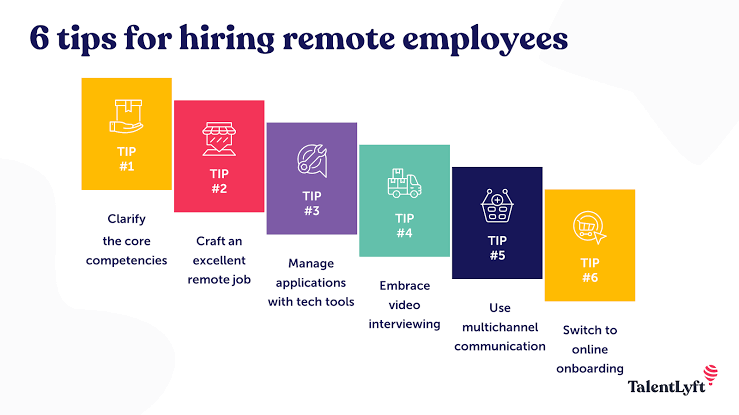 News
News
When it comes to building an affordable nearshore development team, the new year is the perfect excuse to hit refresh. Businesses at this time need to look into hiring smarter, scaling within your budget, and setting up a system that keeps your team productive and predictable. By taking a strategic approach to budget planning, you can unlock access to top talent, optimize workflows, and avoid costly surprises. This guide shows you how to turn your budget into a growth engine (based on the current cost of hiring nearshore developers), creating a nearshore team that delivers results now and scales seamlessly as your business grows.
Why Budget Nearshore Team Building Sets You Up For Long-Term Stability
When you map out a clear budget for hiring nearshore developers, you are building a long-term growth system that your business can rely on. A defined budget helps you understand exactly what level of talent you can bring in, how quickly you can scale, and where you can invest without putting unnecessary pressure on your finances. It prevents those last-minute hiring decisions that drain resources and disrupt ongoing projects. More importantly, it gives your team consistency. Developers stay longer, workflows stay predictable, and you avoid the expensive cycle of hiring, training, and replacing. With a smart budget strategy in place, you are creating a foundation that supports steady expansion, healthier cash flow, and a development team that grows with your business instead of working against it.
A Practical Playbook for Budget-Friendly Software Team Augmentation
When you want to scale your development capacity without letting costs spiral, budget-friendly software team augmentation becomes one of the smartest strategies available. Making augmentation truly budget-friendly is about structuring the engagement correctly, integrating developers in a clean and predictable way, and understanding how to measure the value you are actually receiving. When all of this comes together, augmentation feels like adding a powerful extension to your team without carrying the weight of traditional hiring.
Know the Cost Drivers and Control Them.
Companies often overspend because they only look at hourly rates instead of understanding the full picture. The actual cost includes onboarding time, developer ramp-up, communication overhead, meeting frequency, knowledge transfer, and even the clarity of your internal documentation. If your processes are unclear or constantly shifting, the augmented team will move slowly and burn more hours. But when you define responsibilities clearly, organize work in sprints, and set acceptance criteria that leave no room for confusion, you cut down on wasted hours immediately. Another helpful tactic is asking your vendor for rate bands so you can shift between senior and mid-level developers depending on the task. This gives you the flexibility to maintain high-quality work while protecting the budget.
Design a Right-Sized Staffing Mix.
A high-performing and cost-efficient augmented team always comes from a balanced talent mix. You do not need a team filled entirely with senior engineers to achieve quality results. The smarter approach is to assign one senior engineer to own the architecture, code standards, and decision-making. Then add mid-level developers who handle the majority of feature development. This structure keeps the hourly cost lower while maintaining strong technical direction. For short-term or specialized tasks, bring in fractional specialists such as DevOps engineers, security analysts, or database performance experts. You only pay them for the exact hours needed, instead of hiring full-time specialists, you may not use long term. This hybrid model keeps your spending controlled while giving you the precise skills your project needs at the right time.
Fast Onboarding Multiplies Value.
The longer onboarding takes, the less cost-effective your augmentation becomes. Every extra day of confusion or delayed setup eats into your budget without delivering real work. A clear onboarding plan can change everything. Start with immediate access to tools, a simple architecture walkthrough, a quick introduction to your coding standards, and a small first task that can be completed in a few days. This approach helps developers learn faster while contributing from the start. Nearshore teams offer a natural advantage here because you can align on meetings easily and resolve early blockers in real time. When onboarding is fast and efficient, you gain more productive hours for the same cost, which dramatically increases the overall value of the engagement.
Contracts and Procurement That Protect Your Budget.
Contracts play a huge role in determining how budget-friendly your augmentation model truly is. For projects with clear tasks and timelines, a fixed price per sprint helps control costs and gives you predictable spending. For more open-ended work, a time and materials model with a maximum cap helps you stay flexible without risking overspending. Whichever model you select, make sure your agreement includes KPIs tied to delivery quality, communication expectations, and timelines. Trial periods are especially valuable because they let you evaluate fit before committing long-term. Another smart addition is a clause that allows you to convert augmented developers into full-time hires without heavy recruitment fees. This gives you more control over future staffing and helps you retain strong engineers without inflating your hiring budget.
Tooling and Process Choices That Reduce Spending.
A large part of cost efficiency comes from how work flows through your system. When your CI pipeline, code reviews, testing structure, and deployment process are clean and automated, your augmented team can move faster and make fewer mistakes. Automating repetitive tasks such as testing and formatting saves hours every sprint. Avoid purchasing expensive new licenses for short-term team members. Instead, provide access only to tools that are absolutely essential for their work. Good internal documentation and a consistent workflow also prevent the type of miscommunication that leads to wasted development time. Over the length of a project, these small efficiencies can significantly reduce total spending, often more than rate differences alone.
Measure ROI and Fix Issues Early.
You should always evaluate the performance of your augmented team on a monthly basis. Look at the number of features completed, defects found after deployment, cycle time, and how much business value was delivered in real terms. Convert this into a cost per deliverable metric to see how efficient the team truly is. If you notice rising costs or falling output, you can adjust staffing, refine your processes, or change the scope before the budget becomes strained. Treating your augmented team as an integrated part of your business allows you to make faster decisions and protects your long-term financial health. Continuous measurement is one of the strongest tools for making augmentation more budget-friendly over time.
How Businesses Can Use the New Year To Strengthen Their Nearshore Dev Team
» Reevaluate What Worked and What Didn’t: The new year is the perfect moment to look at the past twelve months and see where your nearshore team delivered well and where bottlenecks held them back. This gives you a clean starting point to refine processes without carrying last year’s baggage into new projects.
» Realign the Team With Updated Business Goals: Your goals for the year ahead are probably different from last year’s. Use this shift to reintroduce priorities, strengthen clarity, and ensure your nearshore developers understand what success should look like for the new year.
» Upgrade Your Tech Stack and Tools: The start of the year is the best time to modernize tools that slow the team down. Even small upgrades in CI/CD, testing tools, collaboration platforms, or internal APIs can dramatically boost nearshore team performance.
» Refresh Documentation and Cleanup Tech Debt: Teams work faster when your documentation, codebase, and architecture diagrams are clean and updated. New year housekeeping helps your nearshore developers onboard faster, make decisions confidently, and avoid time lost in guesswork.
» Restructure Workflows for Better Efficiency: If your sprint planning, QA cycles, or review processes felt heavy last year, the new year is your opportunity to simplify them. Lighter workflows help your nearshore developers ship faster and collaborate more smoothly.
» Strengthen Communication Routines: New year planning calls, alignment check-ins, and revised meeting structures help eliminate friction. Even small adjustments, like shorter syncs or clearer communication channels, create a healthier working rhythm.
» Expand Skills With Targeted Training: The start of the year is ideal for investing in upskilling. Whether it’s AI integration, cloud optimization, security upgrades, or a new framework, your nearshore team becomes more valuable when they grow alongside your roadmap.
» Bring in Supplemental Talent Strategically: If you expect growth this year, adding a few new nearshore developers early helps you avoid scaling under pressure later. Early hiring also gives new team members time to settle before heavy projects begin.
» Review Vendor Relationships and Contracts: The new year is a natural moment to renegotiate contracts, adjust team sizes, lock in better rates, or expand the scope with vendors who performed well. This keeps your budget healthy and your team more aligned with new priorities.
» Set Clear Delivery Expectations for Q1: Strong momentum early in the year sets the tone for the next twelve months. When your nearshore team knows what Q1 should achieve, their output becomes more focused, predictable, and aligned with your direction.
» Improve Cultural Alignment and Team Bonding: New year energy is great for strengthening the relationship between your in-house and nearshore teams. A quick kickoff workshop, shared goals session, or collaborative roadmap meeting helps everyone start the year connected and motivated.
» Audit Past Spending and Optimize This Year’s Budget: A fresh year means fresh budgeting. You can adjust your nearshore model to be more cost effective by refining resource allocation, replacing inefficient workflows, or shifting tasks between senior and mid level developers based on complexity.
» Introduce New KPIs to Track Team Health: Updating your performance metrics at the beginning of the year keeps your team moving in the right direction. KPIs around cycle time, code quality, release stability, and communication help everyone stay accountable.
» Plan for Innovation Rather Than Just Maintenance: Businesses often fall into maintenance mode. The new year pushes you to explore innovation opportunities and let your nearshore team contribute beyond coding. When developers feel involved in new ideas, performance naturally improves.
Your Partner in Smart Nearshore Growth
Building a nearshore development team doesn’t have to be complicated or unpredictable. Blue Coding makes it simple by combining the right talent, cost-effective strategies, and seamless integration into your existing workflows. Every team we help assemble is designed to scale with your business, deliver consistently, and keep your budget in check. Our goal is to turn team augmentation into a strategic advantage, helping your business grow faster and smarter. Ready to bring your ideal nearshore team to life? Contact us today and let’s discuss the ideal strategies on a complimentary discovery call!




